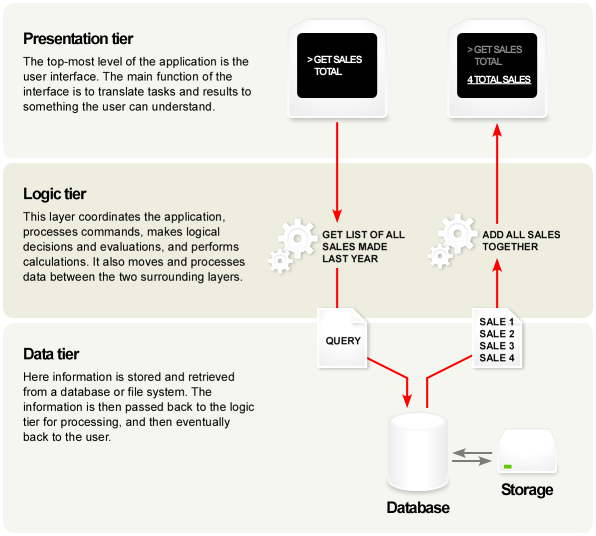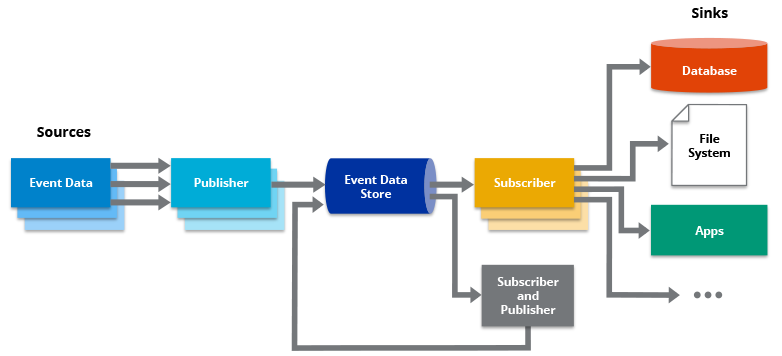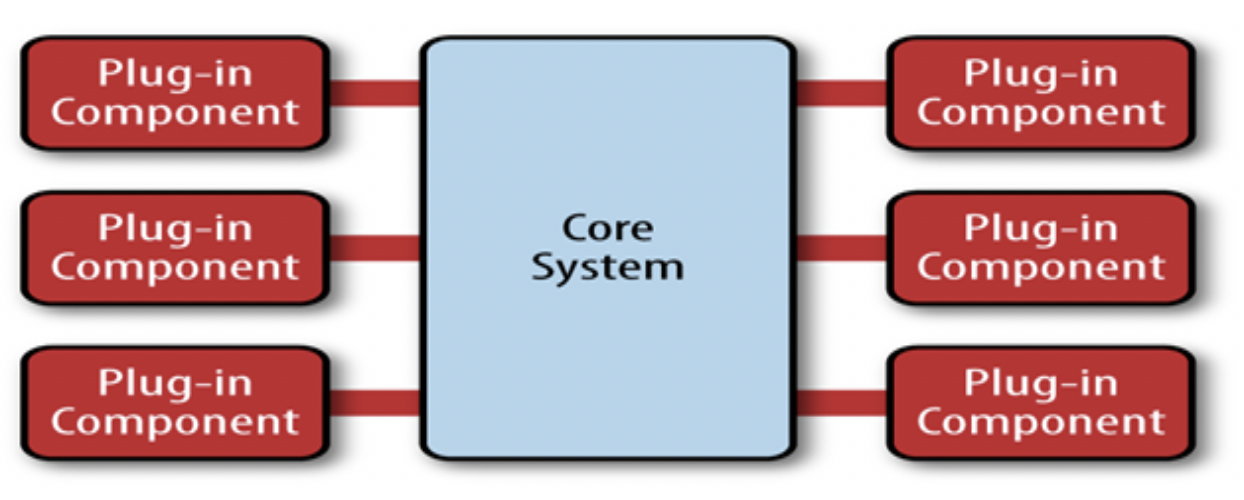Enterprise software forms the foundation of digitally transformed industries. It’s at the heart of enhanced collaboration, productivity, and profit. However, like any physical structure built on a solid foundation, it all starts with the right drawing up the right architecture.
Many companies are also sourcing their computing power through cloud services platforms that complement their cloud-first strategies. This means that modern design patterns are now concentrated on agility, statelessness, and user experience.
The right architecture for your business depends on your unique business demands. This makes it necessary to dive deep and properly understand your capabilities and short-term and long-term goals.
If you don’t have the required skills in-house, it’s vital to engage a reputable third-party software development provider who’ll help you achieve your objectives efficiently and cost-effectively.
But before we dive deep into various options available to organisations today, let’s define it.
What’s Enterprise Software Architecture?
In layman’s terms, enterprise software architecture is a structure that combines the different characteristics of the software and transforms it into a robust solution. It fulfills a company’s specific technical requirements and business demands.
These characteristics include adaptability, reusability, scalability, and more. So you have to think about the impact the design of the architecture can have on the program’s quality and performance.
Regardless of how you built it, the software has to be modular, maintainable, and extendable. This approach helps enterprise technologies evolve quickly with the business in an ever-competitive marketplace.
What Does Good Enterprise Software Architecture Look Like?
There’s no right answer to this question. Robust enterprise software architecture is both adaptable and malleable. It’s designed with the agreement of different IT teams and is focused on achieving business goals seamlessly.
“Good enterprise software architecture” makes the programmer’s life much easier. It also makes debugging the software more straightforward.
The design pattern will help all stakeholders better understand how it’ll work. Furthermore, a good software architecture pattern makes it easier to coordinate the development project and deploy the code.
You can also integrate multiple software architecture patterns within the system to maximum effect. However, to get this right, you need to have the skills, knowledge, and of course, significant experience.
So if you don’t have the necessary skills and experience in-house, it’s best to partner with an established software development provider who provides nearshoring or extended team support. This approach will help you get the most out of architectural patterns and the best way to use them.

Top Enterprise Software Architecture Patterns:
Microservices Architecture
Microservices boast a self-regulating and independent codebase written and maintained by a small group of software engineers. Microservices architecture is made up of loosely coupled services responsible for the execution of related business logic.
Each service is based on the nature of their domains and separated into a mini-microservices pool. You often see this design in highly complex enterprise mobile apps.
This approach also allows developers to release updated versions of the software through sophisticated automation protocols.
Microservices architecture patterns are similar to event-driven and microkernel architecture. However, it’s only used when different tasks are easily separated.

Pros:
- Ideal for applications that need to scale without overloading the entire system
- The system is highly fault-tolerant as all services are bifurcated into pools
- The whole enterprise system won’t collapse if some microservices fail
- You can deploy multiple programming languages to develop different purpose-built microservices helping keep the technology stack updated
Cons:
- Can confuse users when too many microservices as part of the web app or website appear later
- Communication costs can be high
- Microservice interactions can lead to cloud imbalance
- You’ll need top tech talent to design and develop such a system
Are you looking to hire top solution architects and mature software engineers for your development project? Send us your staffing request and we'll help you source and employ the best tech talent fast and cost-effectively!
Verdict:
This approach is best suited for websites and web apps with a small number of components. Microservices architecture is also ideal for distributed software teams spread across the world and corporate data centres with well-defined boundaries.
Layered (N-Tier) Architecture
Layered (n-tier) architecture is the most common design pattern we see in enterprise software. It’s often built around a database where different business applications store information in tables.
Some leading software frameworks like Drupal, Express, and Java EE were developed following this design. Some of the connected applications naturally form the layers of the architecture.
The code is arranged in a manner that allows the data to enter the top layer. From here, it works its way down to the bottom (which is usually the database). Each layer has a specific task, for example, reformatting the values to maintain consistently.
Whenever you follow this architectural approach, different software engineers can work independently on separate layers. When layers are isolated, they aren’t impacted by changes in other layers. This allows for seamless refactoring.
The primary challenge for software architects is to define each separate layer and slice up the tasks. When all the requirements fit the pattern perfectly, you can easily separate them and assign them to different software developers.

Pros:
- Ideal for companies that want to stick to traditional design patterns
- Inter-dependencies are negligible, so testing is easier
- Many connected enterprise applications follow the same design patterns
Cons:
- Can create sinkhole anti-patterns where data passes through layers without logic
- Layer isolation can make it challenging to comprehend the overall architecture
- The source code and logic can become a total mess when combined
Verdict:
Layered (n-tier) architecture is best for companies that want to develop new software quickly. It’s also ideal for software that demands strict maintainability and testability standards.
Event-Driven Architecture
An event is essentially an alteration in the software or hardware. So event-driven architecture supports two parts, the event producer and the event consumer. In this scenario, when you click on a button, the event initiates the related programmed action.
Whereas layered architecture demands the code flow top-down through the layers, the event-driven architecture supports modules that are only activated when an “event” occurs.
When properly designed, the event-driven architecture ensures increased agility, optimised operations, and significant cost savings.

Pros:
- Best suited for systems that are asynchronous and run on asymmetric data flow
- Easily extendable and scalable
- Highly adaptable to complex and chaotic environments
- Highly suitable for IoT deployments
Cons:
- Error handling can quickly turn into a nightmare
- Developing a systemwide data structure is complicated
- Overhead messages slow down the processing speed
- You’ll need a backup plan for the central unit to respond to module failure
- The interaction between different modules can only be tested when the whole system is ready
Verdict:
Event-driven software architecture is perfect for user interfaces and applications where individual data blocks interact with a few modules.
Microkernel Architecture
If the core set of operations in your application are often used in different patterns that depend upon the data and the task, you’ll need microkernel architecture. For example, the basic routines for displaying and editing files are all part of the microkernel.
Additional features layered on top are usually called plug-ins—this is why microkernel architecture is also often called plug-in architecture. The pluggable nature of the system also makes the software highly extendable.
Microkernel architecture is divided into two components—one dedicated to the core system and the other to plug-ins. To render the system effectively, you have only to store the right proportion of components.

Pros:
- By adding plug-in modules to the core dynamically, you can avoid potential downtime during deployment
- Requires less developmental updates over time
- Test plug-in prototypes for performance issues in isolation without disrupting the core system
- The capabilities of each plug-in help react to changes in near real-time
- The core system maintains stability as changes take place in isolation
Cons:
- It’s challenging to decide what belongs inside the microkernel
- It’s challenging to execute a microkernel pattern when a large number of plug-ins are compatible with the core
- Once several plug-ins depend on a microkernel, it can be near impossible to make changes to it
- The plug-ins require considerable handshaking code to make the microkernel aware of what’s going on
Verdict:
Microkernel architecture is ideal for software like workflow and scheduling applications. It’s also best suited for applications like web browsers.
The enterprise software architectures listed above are some of the most popular design patterns available today. However, there are plenty of others to choose from, including Cloud (which we’ll reserve for the next posts).
It all depends on what’s right for your specific technological and operational objectives.
Do you need help choosing the right software architecture for your business? We can help! Schedule a commitment-free consultation now.


